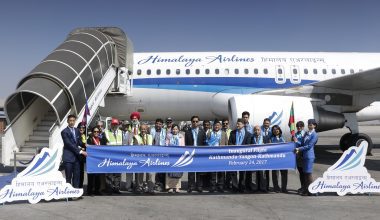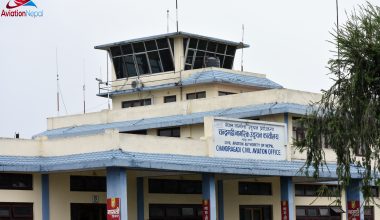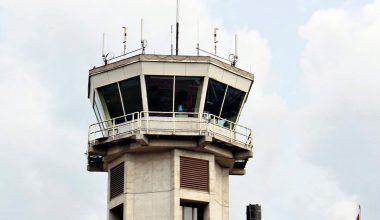The world’s largest aerospace company, Boeing, has produced most commercial aircraft during its century-long history. Still, none of the aircraft variants can set a selling record as high as the Boeing 737s. Boeing 737 is the world’s most popular passenger jetliner, with more than 10,000 units delivered and a portfolio order for nearly 5000 units more. Boeing 737 aircraft are ubiquitous, as about 1200 aircraft of this model are flying now. Throughout its long history, the Boeing 737 has enjoyed unrivaled success and has become the favorite of many passengers and airlines. Its huge commercial success can be attributed to its small and fuel-efficient features and its performance, range, and passenger configuration. Do you know what various Boeing 737 types are?
Boeing 737 types
Over 50 years after the inaugural flight of the initial Boeing 737-100 (in April 1967), Boeing 737 remains the highest-selling commercial passenger jet in the world. In more than half a century of Boeing 737’s existence, the US aerospace titan Boeing has made various models to bring out more improved versions of the type to meet customers’ demands. Within Boeing 737 types, there are four distinct families of variants. Let’s have detailed information.
1. Boeing 737 Original
The first Boeing 737-100, rolled out in January 1967, was a stumpy little twin-jet airliner that entered the service with German flag carrier Lufthansa one year later in February 1968. Powered by Pratt &Whitney JT8D low-bypass engines, it could fly at a cruise speed of 0.73M and a maximum range of 1 720 Nm offering seating for 85 to 124 passengers. Likewise, United Airlines dubbed another Boeing variant B737-200 in April 1968, which proved more popular due to its lengthened aircraft fuselage, the maximum range of 2,645Nm, and maximum certified seating of 136 passengers. Under B737 Original family (first generation), there are two variants: B737-100 and B737-200ADV.

The 737 original models competed with SE 210 Caravelle, BAC-111, DC-9, and MD-80 derivatives and continued to be developed into thirteen passenger, cargo, corporate and military variants.
The primary customers of Boeing 737-100 include Lufthansa and Malaysia-Singapore Airlines, and those of Boeing 737-200 include United Airlines, All Nippon Airways, US Air Force (as T-43), and Indonesian Air Force (as B737-2 x 9 Surveiller).
2. Boeing 737 Classic Family
Discussing Boeing 737 types, another distinct family is B737 Classic or second generation. The variants in this family include Boeing B737-300, B737-400, and B737-500 series. Based on the foundation of first-generation aircraft, a total of 1988 Classic series were delivered between 1984 and 2000.
The Boeing 737-300 was the first major redesign of the B737 aircraft that took to the skies for the first time on 24 February 1984. The launch delivery was on 28 November 1984, and the early customer was US Air Force. B737-300 was longer and wider, extending the fuselage around the wing by 9 feet 5 inches. It saw an increase in passenger capacity to 149 and wingtip to 23cm. Powered by the new CFM56-3B-1 high-bypass turbofan engine, the aircraft was supposed to gain significant fuel economy and noise reduction, but the modern engine posed a big challenge as it wouldn’t fit under the wing, given the low-ground design of the plane. By minimizing the fan diameter and relocating engine components to the side pod, Boeing dealt with this problem.

Designed to bridge the gap between 737-300 and 757-200, Boeing developed B737-400, the longest version (36.45M) with a seating capacity of 188 passengers. Its range with maximum payload was 2,800Nm, the lowest among Classic series aircraft.
Boeing 737-500 was a direct and modern replacement for the 737-the 200 that incorporated the improvements of the 737 Classic series, including increased fuel efficiency, cruise speed, and range. It could fly economical long routes by accommodating up to 140 passengers. First flown by then-newcomer Southwest Airlines, the 737-500 has faced expedited retirement due to its smaller size after two decades of service.
3. Boeing 737 Next Generation
The Next-Generation Boeing 737 type encompasses a family of high-performance and versatile jet transports providing customers with superior reliability, fuel efficiency, and high-value returns. The NG family has four main variants: B737-600, B737-700, B737-800, and B737-900. Produced in 1996 and introduced in 1997, the Boeing 737 Next Generation was developed as the second derivative of the B737 to further cement the 737’s position as the most successful airliner in the world.
Proceeding on the same airframe to ramp up certification and get the planes to carriers faster than the rival A320 family, Boeing’s board of directors authorized the NG program to upgrade the 737 Classic series with redesigned wing, a glass cockpit, modern interior configurations, greater fuel capacity, longer range, and higher maximum takeoff weights. Equipped with CFM56-7 high-pressure ratio engines, Boeing Next-Generation 737 can seat between 110 and 189 passengers and cruise at the speed of 0.785M. While B737 orders by 1993 were over 3000, the popularity of the NG family helped B737 to become the first commercial aircraft to surpass 10,000 orders in 2012.
Set to replace B737-500, Boeing 737-600 couldn’t succeed as much as -500 in total orders. It was the smallest model of the NG family, having a fuselage length of 31.20M and maximum certified seating of 149 customers. B737-600 competes with Airbus A318.

Boeing B737-700 replaces 737-300 and is a competitor to Airbus A319, accommodating 126 passengers in two-class or 149 one-class configurations. It measures 33.60M long, with a maximum range of 4400Nm. Entering the service in 1997 with Southwest Airlines, 737-700 grabbed an order of 63 aircraft.
Introduced in 1997, Boeing 737-800 is a top performer in units sold, with more than 5000 deliveries. Offering significant upgrades and improvements to the successive Boeing 737 types, it enjoys a significant degree of monopoly in the niche market. It doesn’t have the highest passenger capacity and range among other NG series and can fly 175 passengers in a one-class configuration at 2,935nm. American Airlines is the largest operator of -800 aircraft, which comprise nearly one-third of its overall fleet.
Besides these four variants, Boeing has made several revisions and introduced the extended range-700ER/900ER variants of the B737 family.
4. Boeing Max
Another 737 type, Max, is Boeing’s best-selling plane, with more than 5,000 orders. Boeing 737 Max family is the new generation of highly successful city jets offering the greatest flexibility, reliability, and efficiency in the single-aisle market. The most technically advanced B737 Max family includes the Max 737-7/8/9/10 series and the high-density Max 200 variant of the B737 family.
Also Read: Delta VS United , First and Economic class? Which One Is the Best?
Just a reminder; it is the same aircraft family whose introduction faced major hiccups and ravaged the reputation of the storied US titan and its best-selling jet with the tragic loss of life as a result. The worldwide grounding of 737Max in 2019 following two hull losses made notorious Max one of the worst corporate blunders of all time. Now that the American planemaker has scrutinized faulty systems and made significant changes, Boeing’s embattled 737 Max has returned to service and become more powerful and efficient than ever.
Introduced in 2018, Boeing Max 7 has a length of 35.56 meters and a typical seating capacity of 149 passengers. It has a maximum range of 3,850 nm and provides 18% lower fuel costs per seat.

Boeing 737 Max 8 is the first variant and the most popular version of the Boeing 737 Max family powered by the CFM Leap-1B engine. It is designed for short- and medium-haul routes; it can seat 178 passengers in 2-class seating and fly at 4085 miles.
B737 Max 200 is a high-density version of Max 8 that offers 20% more cost-efficiency per seat, including 5% lower operating costs than the Max 8. One of the most efficient narrow bodies, Max 200, can accommodate the maximum passenger seating of 200 at 0.785 cruise speed.
The stretched variant of Max 8, Boeing 737 Max 9, first flew in 2017 and entered the service with Lion Air in 2018. Its fuselage is 41.16M long and has a typical seating of 192 passengers. Compared to Max 8, it has high MOTW, MOLW, and maximum zero fuel.
The latest Max 10 is the longest version of the Max family(43.8m), incorporating the latest technology CFM international LEAP-1B engines, Advanced Technology winglets, Boeing Sky Interior, and similar characteristics of 757-300. It can accommodate 178 passengers in 2-class seating with a minimal increase in fuel burn. The fuel-efficient engines, passenger-preferred flight deck design, and other modifications make the Boeing Max family an excellent choice for several airlines.
The workhorse of several airlines, the narrow-body B737 is the most financially successful commercial aircraft that has evolved through four generations, offering upgrades and improvements to successive Boeing 737 types. With the advancement of technology and change in passenger demand, Boeing continues to introduce improved B 737 types and remains at the forefront.






